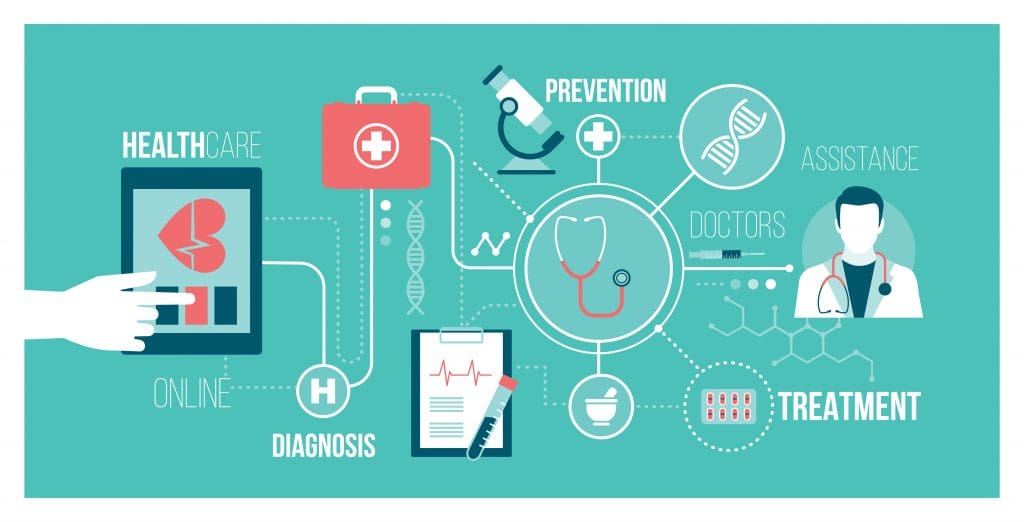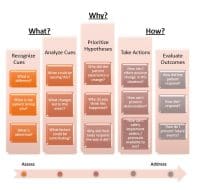A typical encounter within the healthcare system can be overwhelming and complicated, depending on the patient’s health condition. For example, imagine a patient with a cancer diagnosis, declining health status, and myriad medical bills. How can healthcare professionals help these patients? Care management interventions benefit health systems, employer groups, and managed care organizations by effectively coordinating care and positively influencing patient health outcomes.
Traditional telephonic care management programs target high-risk patients with adverse health conditions to contain rapidly growing healthcare costs. According to Jubelt and colleagues, traditional care management has limited effectiveness due to lower patient engagement rates nationally, ranging from 10% to 20%. Contributing factors to lower engagement rates, which often leads to suboptimal outcomes, include lack of knowledge about program benefits, time commitment, distrust in speaking to an unknown individual, and difficulty accessing the nurse care manager.
Nurses and other healthcare professionals must actively engage in novel methods to increase patient engagement in care management programs and improve their health outcomes while decreasing healthcare costs. One method involves digital, mobile, and app-based interactions with patients. Fortunately, the barrier of not having a smartphone or tablet to participate in these interactions has decreased as technology has advanced. The Pew Research Center reports that approximately 96% of Americans possess a cellphone of some type. Tablet ownership continues to increase, as well.
5 benefits
Here are five benefits of digital care management.
1. Simple and easy interactions at the patient’s convenience
Launching an attractive marketing approach and positioning the amenities of digital care management practices is vital for patient interest in this new, innovative delivery. Patient availability and time are critical success factors for care management engagement. Optimal engagement involves interacting with patients at the right place, right time, and the right method. Traditional telephonic care management is time consuming. In comparison, digital care management applications via smartphone or tablet offer the convenience necessary to allow patients to interact with their nurse case managers and multidisciplinary team on-the-go without interrupting their day-to-day lives.
Another advantage of digital care management is the real-time delivery of messages directly to the patient. The evolution of smartphones and tablets has promoted easy access to responding to messages. Patients may turn on app notifications to enable prompts when their case manager replies to keep up with timely, quick communication. Automated reminders encourage active patient engagement through empowerment and essential interactions with the health care team. The opportunities to leverage technology for convenience and engagement continues to grow from smart applications, wearables, in-home monitoring equipment, and more.
2. Early detection and prevention of chronic illnesses
Unlike traditional care management, digital care management communication promotes preventative education delivery for low to medium-risk patients. The level of risk for developing an adverse health condition does not determine eligibility to participate in care management programs. Successful prevention strategy must be expanded to all patients and not solely for high-risk patients with chronic conditions.
Addressing illness prevention and early detection also is an important community health factor. Assuming patients can understand complex medical jargon and principles results in the loss of patient engagement when conveying important health information. Digital care management promotes engagement—and information dissemination—by facilitating the delivery of straightforward, easy-to-understand educational materials on disease prevention. Interactive digital applications deliver information in short bursts to maximize attention span and knowledge retention, and interactive quizzes can help assess knowledge retention and further encourage patients to manage their health conditions actively.
3. Opportunity for lifestyle modification
Focusing on wellness and lifestyle modification is an effective tactic for patients of all health risk statuses. The impact of multidisciplinary collaboration and interaction with patients often produces the desired outcomes. Case managers, nurses, dieticians, pharmacists, and social workers can diligently work with patients to customize education to fit their needs. This delivery can empower patients to control their health and gain a broader knowledge of healthy practices to improve their health and lifestyle. Furthermore, the multidisciplinary practice accounts for individualized recommendations compared to a one size fits all approach.
Healthcare is personal, and what may apply to a general population may not be sufficient for the one patient—it’s population health, one person at a time. An equal partnership and relationship-based supportive approach for patients is imperative to promote better health outcomes and decrease health disparities. Digital care management delivery of early wellness education can decrease long-term comorbidities such as diabetes, heart disease, and hypertension.
4. Shift to value-based care
Multidirectional feedback and communication loops are critical to informing patients, health systems, and managed care organizations about health condition management. Value-based care expands multidisciplinary care management and facilitates effective transmission of health information across various healthcare entities to offer resources and input into managing patient health conditions.
The value-based care principle takes the role of team collaboration and extends it across the care continuum to boost positive health outcomes. Leveraging digital care management to feed information bi-directionally between the care management platform and the health system’s electronic medical record helps patients translate care management from a 360-degree perspective.
The enactment of the 21st Century Cures Act expedites the need for more digital care coordination efforts. The first step to shifting to value-based care is acknowledging the need for holistic digital communication processes to tie valuable health information to promote better patient health outcomes.
5. Lower healthcare costs
The shift to value-based care through digital care management is the first step in decreasing healthcare costs over time. Value-based care focuses on the intersection of healthcare cost and quality, using a proactive approach to manage patient health conditions, which to minimizes downstream healthcare costs.
An immediate return on investment for digital care management is challenging, but establishing comprehensive patient outreach strategies and engagement plans to enable positive returns will ultimately reduce costs. The key to decreasing healthcare dollars centers around mutual persistence and determination between the patient and the care management team.
A growing trend
As a result of the COVID-19 pandemic, digital engagement is a growing trend. With the extended pandemic precautions creating the new normal, and as the healthcare industry accelerates with digital transformation, the time for digital engagement is now. To effectively accelerate the adoption of digital care management, it’s important for healthcare professionals to buy-in to this new, innovative concept.
Implementing a digital care management application and platform is beneficial for patients, health systems, and managed care organizations. The primary driver of digital care management is patient adoption and engagement, which can drive better health and cost outcomes.
The bottom line is that the more engaged patients in self-management of their health or condition, the more empowered they will be to make their own decisions to influence better health outcomes for a healthy life.
Iswarya Srinivasan and Laurie Gehrt work for a regional payer in the Midwest.
References
Demographics of Mobile Device Ownership and Adoption in the United States. Pew Research Center: Internet, Science & Tech. https://www.pewresearch.org/internet/fact-shett/mobile/. June 5, 2020.
Federal Register. 21st Century Cures Act: Interoperability, Information Blocking, and the ONC Health IT Certification Program. 2020. www.federalregister.gov/documents/2020/05/01/2020-07419/21st-century-cures-act-interoperability-information-blocking-and-the-onc-health-it-certification
Jubelt LE, Volpp KG, Gatto DE, Friedman JY, Shea JA. A qualitative evaluation of patient-perceived benefits and barriers to participation in a telephone care management program. Am J Health Promot. 2015;30(2):117-19.


















